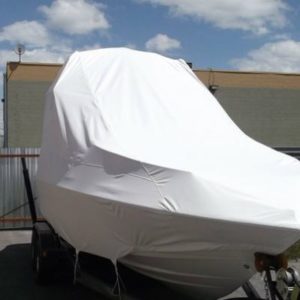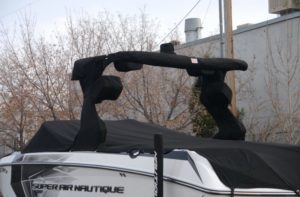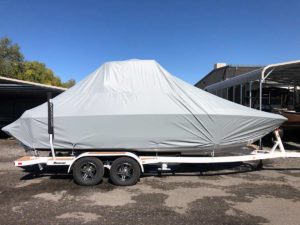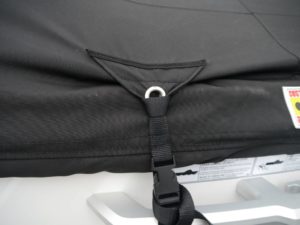
Clear Options for Your Enclosure
On any given day, the phone will ring here in the shop as it so often does. One of us will pick up, and on the other end we’ll hear a phrase we’re very familiar with: “My Eisenglass needs to be replaced.”
The first thing that pops into my head is usually, “I would think so, seeing as how Eisenglass has been out of business for over 40 years!” That’s when I start wondering how a household name like that is no longer in business. Ninety percent of the people I talk to ask for it by name. Then I bring myself back to the problem at hand. What kind of enclosure does this customer want? What do they need? What do they expect? What kind of budget are they working with? What kind of quality and customer service do they expect? All of those things factor in to choosing what type of glass they need.
In our shop, we use two types of glass for windows-one is hard and the other is soft. Both have different manufacturers, quality and performance expectations but both also have benefits for doing the job.
The most common here in Utah is soft, reliable vinyl. For that, we like to use 30g double-polished clear vinyl or 30g Strataglass. Cost and quality are vastly different.
Double-Polished Clear Rolled Vinyl
My best guess is that this is what is used on about 70-80% of boats coming in with factory enclosures and is what most fabricators used. It’s softer and will roll up easier than Strataglass, but it does have some minor imperfections that lead to less visibility. It also scratches fairly easily. Depending on usage and UV exposure, it lasts somewhere between 5-10 years but in some cases a little bit longer.
Strataglass
Strataglass is the premier marine vinyl that’s press-polished and scratch-resistant. It has a protective coat that helps lock in the plasticizer that keeps the vinyl from turning yellow and becoming brittle. It has a glass-like clarity with much better visibility and blocks 88% of harmful UV light. It’s more expensive but worth the extra money since it can last up to 12 years, depending on usage and exposure.
The other clear option for your enclosure is a rigid window. This option is by far the nicest, has the highest clarity, best visibility, and cleanest finish. The major disadvantages to ridged windows are storage and cost. If you like to take your enclosure down every time you’re on your boat or roll up most of the windows, this is probably not the best option for you. When working with ridged windows there are two material options and both offer a variety of unique qualities.
Polycarbonate
This is the most common material used for ridged window application and can either be sewn or bonded in. It is shatter-proof and has a scratch-resistant coating on it, but that coating is not perfect. If it does get scratched, it CAN NOT be buffed out. Polycarbonate has UV-blocking qualities but has been known to yellow a bit over time. However, this has only been happening with a small percentage of installations and we haven’t seen it on jobs we’ve done. Since this is something that can happen, we recommend window covers for when the boat is not in use. Life expectancy on polycarbonate is somewhere between 5 and 12 years depending on usage.
High-Impact Acrylic
Modified high-impact acrylic is a specially formulated, flexible plastic that is over ten times more break-resistant than regular acrylic. It offers UV resistance without a special coating and although it’s not as scratch-resistant as coated polycarbonate, minor scratches can be polished out of the glass. It’s unable to be sewn and must be bonded. Since sewing isn’t an option, it’s not used on nearly as many boats, but we haven’t seen any issues with yellowing or crazing. Window covers would still be recommended to prolong life, however.
Recent Posts

What Cover Do I Need?

Keepin’ That Tower Clean – The Art That Is A Tower Boot
Featured Posts

One Size Fits All?

Cinch Vs. Ratchet: Fabrication




